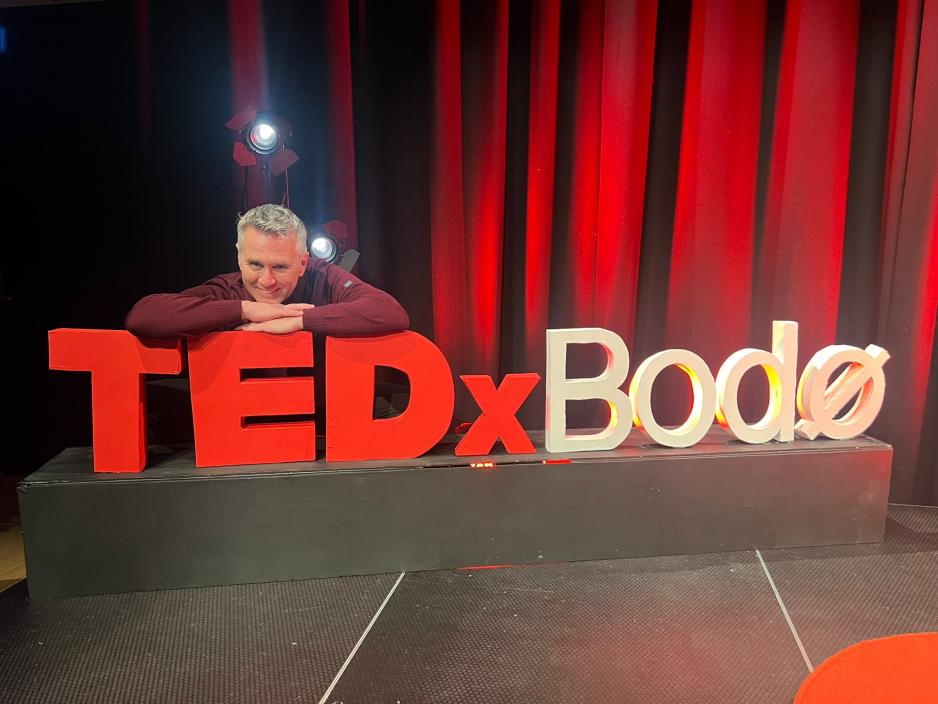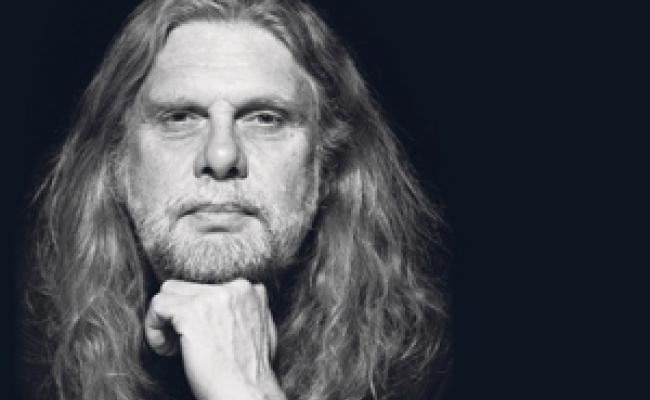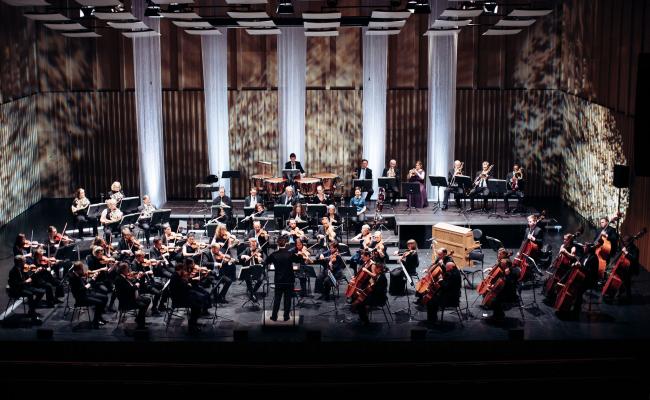Op-ed: An Arctic Movement: Dancing our way to Cultural Democracy

Nicholas Rowe is a UNESCO Chair in Dance and Social Inclusion and Professor II at the Faculty of Education and Arts at Nord University in Norway. On October 24, he gave a TED Talk at TEDxBodø, on the role of arts education and climate change, entitled Can Dancing Save Democracy from Dystopia? (Photo: Private)
Op-ed: Climate change will displace 1-in-every-9 people on the planet, and intercultural and transcultural competence can help us tackle the challenges that will arise, writes Professor Nicholas Rowe, UNESCO Chair in Dance and Social Inclusion.
This is an op-ed written by an external contributor. All views expressed are the writer's own.
For a child born today, the first word that they speak will probably be in a different language than the last word that they hear and understand.
During their lifetime, they will encounter cultural differences and transformations at an unprecedented rate.
By 2050, as a result of the climate crisis and associated political and economic catastrophes, the world will be home to more than 1 billion climate refugees.
This climate displacement of 1-in-every-9 people on the planet will quickly eclipse the 80 million people currently experiencing forced migration, or 1-in-every-110 people on the planet.
Climate change and migration in the Arctic
The Arctic region is experiencing climate change more rapidly than any other part of the planet, and communities in the Arctic are already experiencing the prospect of climate-induced displacement, raising significant questions over territorial justice, particularly for Indigenous communities.
A scale unimaginable at the start of this century.
At the same time, the Arctic region is experiencing inward migration at unprecedented levels.
Historic migration patterns in the Arctic suggest that its location is too peripheral to be impacted by global political events, but the migration of refugees from the Mediterranean to the Arctic has already taken place at a scale unimaginable at the start of this century.
In 2015, the influx of refugees to the far north of Norway was the per-capita equivalent of 1.2 million people suddenly arriving in Berlin.
So while those in more fragile states might currently seem the most vulnerable to climate displacement, political conflict can quickly upend our illusions of stability.
Climate change does not discern, and this displacement of individuals and whole communities will ultimately impact every corner of the world, and every strata, of every society.
The Arctic as a key location
Fortunately, Norway has resisted responding to this challenge with the alarmist tendencies and return to autocratic government adopted by countries further south.
Across Europe, once-sacred human rights and refugee conventions have been neglected or abandoned, ultra-nationalism has risen, democratic attitudes have declined, and the brutal treatment of migrant children and families has been normalized.
The Arctic region is experiencing inward migration at unprecedented levels.
This positions Norway, and particularly the Arctic region, as a key location for more explorations into how to sustain democratic, rights-based societies within a future shaped by mass climate displacement.
So how should we prepare the massive increase in population mobilization that climate displacement will bring?
What are the competences that the next generation of the planet will need, to live meaningful lives and sustain a sense of belonging, amidst strangers and strange lands? How will they gain these competences?
These are major questions for education and educators.
Ultimately, these questions point to the significance of intercultural and transcultural competence. When we are interculturally competent, we can encounter and appreciate cultural differences.
Also read (the text cont.)
Intercultural competence allows us to interact with diverse cultural groups and recognize that the strangeness of their cultures is deserving of respect.
But will such intercultural competence be enough when we find ourselves forced to live in increasingly complex clusterings of cultures, and perhaps moving between communities many times across our lifetimes?
This suggests the importance of transcultural competence, which allows us to go beyond respect and appreciation of cultural differences.
Transcultural competence disposes us to actively engage in processes of creative synthesis, constructing new, hybrid forms of culture.
Through transcultural activities, we seek to continually generate and regenerate culture in response to the people and places we find ourselves amongst, so as to continually revitalize a sense of community and belonging.
Transcultural competence
Transcultural competence is complex, however; it requires an ethical curiosity, valuing differences and approaching such differences with a sense of equality.
This vision for cultural democracy has been advanced by the Porto Santo Charter, which emphasizes the equal validity of all cultures and challenges the idea that some cultural forms are superior to others.
This displacement of individuals and whole communities will ultimately impact every corner of the world
To enact this vision of cultural democracy and prepare the next generation for lives and relationships in ever-changing communities and constellations of culture, there is therefore an urgent need to develop education systems that enable democratic encounters between cultures: spaces for individuals and communities that carry very diverse cultures to interact and experiment, without expectations of assimilation or segregation.
Enabling cultural democracy is perhaps the most important mandate for creative arts education in the 21st century. Through experiences in the arts, we can imagine and experience alternate ways of being.
Within such experiences, we can then transform both our vision of the world, and our understanding of ourselves.
When we engage in these creative activities collectively, we can collectively reconstruct cultures into meaningful constellations, providing us with a sense of becoming and belonging.
Without such opportunities to participate in shared enactments of creativity, it will be very difficult for a child born today to encounter strangers and strangeness openly and positively.
Cultural hierarchies
The growth of such cultural democracy within creative arts learning is challenged, however, by education systems that continue to sustain cultural hierarchies.
Arts education systems around the world continue to privilege particular expressions of culture while excluding, marginalizing or tokenizing others. How might we therefore create space for more equitable cultural interactions?
There is an urgent need to develop education systems that enable democratic encounters between cultures.
This is a key question of INTRACOMP, a major new research project funded by the European Union and led by Nord University, with 12 partners from universities and cultural organisations across Europe and the Pacific.
As the scientific lead of this project, I am fascinated by the diverse ways that creative arts can allow for intercultural and transcultural encounters, and provide children with new ways of being, becoming, and encountering ever-diversifying cultural expressions.
Dance, drama and music provide very evocative opportunities for young learners to encounter difference and imaginatively experiment with alternate ways of being together with others.
This idea aligns with the Norwegian government’s mandate for zero exclusion of children, and other major research activities undertaken by Nord University, such as PrepChild.
Together, we are creating education systems that not only give our children a sense of belonging, but also enable them to actively create cultures of belonging, across the course of their very complex and unusual lives.



